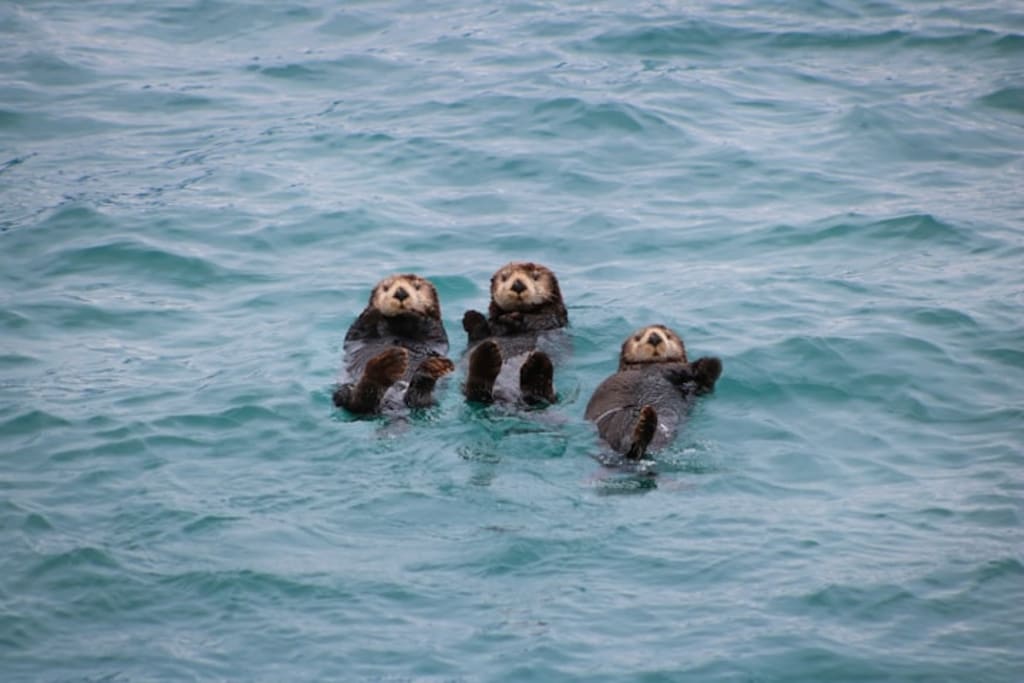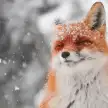
Otters, members of the Mustelidae family, are charismatic and agile mammals that inhabit various aquatic environments worldwide. With their playful behavior, sleek bodies, and significant ecological roles, otters captivate the interest and admiration of scientists and nature enthusiasts alike. This essay explores the physical characteristics, behaviors, ecological importance, and conservation status of otters.
### Physical Characteristics and Behavior
Otters are known for their streamlined bodies, which are perfectly adapted for aquatic life. They have long, slender bodies with webbed feet, which aid in swimming, and dense, water-repellent fur to keep them warm in cold waters. Depending on the species, otters can vary significantly in size. For example, the giant otter (Pteronura brasiliensis) of South America can reach up to 1.8 meters (6 feet) in length, while the smallest, the Asian small-clawed otter (Aonyx cinereus), measures about 90 centimeters (3 feet).
Otters are highly social animals, often seen playing together, a behavior believed to strengthen social bonds and improve hunting skills. Their diet mainly consists of fish, crustaceans, and mollusks, though they are opportunistic feeders and may eat small mammals and birds. They are adept hunters, using their sensitive whiskers to detect prey and their sharp teeth to catch and consume it.
### Ecological Importance
Otters play a crucial role in maintaining the health of aquatic ecosystems. As apex predators, they help regulate the populations of fish and invertebrates, ensuring that no single species dominates the environment. This predation supports biodiversity and prevents the overgrazing of vegetation by herbivorous prey species.
For example, sea otters (Enhydra lutris) in kelp forest ecosystems are known to prey on sea urchins, which, if left unchecked, can devastate kelp beds. By controlling sea urchin populations, sea otters promote the growth and health of kelp forests, which serve as vital habitats for numerous marine organisms and help in carbon sequestration.
### Social Structure and Reproduction
Otters exhibit varied social structures depending on the species. River otters (Lutra canadensis), for instance, are often solitary or live in small family groups, while sea otters are known for forming large rafts, especially during resting periods. These rafts can consist of dozens of individuals floating together, often holding hands to stay connected.
Reproduction in otters is also fascinating. Female otters typically give birth to one to four pups after a gestation period of about two months. The young are born blind and helpless, relying entirely on their mothers for warmth, protection, and nourishment. Otter mothers are highly attentive and nurturing, teaching their pups essential survival skills, such as swimming and hunting, before they become independent.
### Conservation Status
Despite their ecological importance, many otter species face significant threats, primarily from habitat destruction, pollution, and illegal hunting. The International Union for Conservation of Nature (IUCN) lists several otter species as vulnerable or endangered. For instance, the sea otter, once hunted to near extinction for its fur, is still struggling to recover due to oil spills, climate change, and predation by orcas.
Conservation efforts are critical to the survival of these remarkable animals. Habitat restoration, legal protection, and public awareness campaigns are some of the strategies employed to safeguard otter populations. Organizations worldwide are working tirelessly to monitor otter populations, protect their habitats, and address the threats they face.
### Conclusion
Otters are extraordinary creatures that embody the delicate balance of aquatic ecosystems. Their playful demeanor and sophisticated hunting techniques reflect a high level of intelligence and adaptability. As apex predators, they are indispensable in maintaining biodiversity and ecological health. However, the survival of otters is precarious due to various anthropogenic pressures. It is imperative to continue and expand conservation efforts to ensure that these fascinating animals thrive for generations to come. The otter's presence in our rivers, lakes, and oceans is not just a testament to their resilience but also a crucial indicator of the health of our natural world.
About the Creator
Enjoyed the story? Support the Creator.
Subscribe for free to receive all their stories in your feed. You could also pledge your support or give them a one-off tip, letting them know you appreciate their work.






Comments
There are no comments for this story
Be the first to respond and start the conversation.